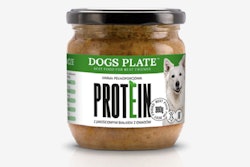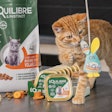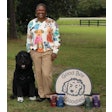
The increase in U.S. pet ownership, humanization and premiumization during the pandemic continues to fuel pet food industry growth. More people may be returning to brick-and-mortar pet specialty retail outlets.
Analysts with consumer data provider Placer.ai calculated that PetSmart’s average monthly visits increased to 15.7% in 2021, while Petco’s increased 21.7% compared to 2019. Likewise in 2022, year-over-two-year visits rose every week this year for both pet specialty retailers. Visits during the week of February 28th increased 12.8% for PetSmart and 13.7% for Petco compared to the equivalent week in 2020.
PetSmart leads Petco in foot traffic, according to Placer.ai. However, Petco had record visits and sales in 2021. Analysts believe visit-share data indicates Petco may be gaining on PetSmart’s lead in foot traffic.
“In Q1 2019, PetSmart received 67.0% of visits while Petco obtained 33.0% of visits out of the total visits for the two brands,” Placer.ai analyst Bracha Arnold wrote. “By Q4 2021, PetSmart’s visit share had dropped 64.6% while Petco’s visit share climbed to 35.4%.”
Internet vs. brick-and-mortar pet food sales trends
In February on PetfoodIndustry.com, Packaged Facts publisher David Sprinkle covered the dynamic between online and brick-and-mortar pet retail. With tech-, convenience- and safety-prioritizing shoppers shifting online, pet food sales through the internet are estimated at 36% of the total in 2021, factoring in pureplay online retailers (such as Amazon and Chewy) as well as the digital storefronts of traditionally brick-and-mortar-based retailers (such as Walmart.com or Petsmart.com).
Given the e-commerce juggernaut, “the digital storefronts of traditionally brick-and-mortar-based retailers” is morphing in the direction of “the digital operations of retailers formerly known as brick-and-mortar based.” In “U.S. Pet Market Focus: Pet Product Retail and Internet Shopping Trends (December 2021),” Packaged Facts projects that by 2025 e-commerce sales of pet food/treats will account for 54% of the total, with brick-and-mortar mass-market revenues at a 29% share and the brick-and-mortar pet specialty share at 11%.
Although e-commerce has fueled overall sales growth in pet food, internet gains by Chewy, Amazon, et al. have cannibalized brick-and-mortar sales to a degree. What remains to be seen: The degree to which the online operations of Petco, PetSmart, Walmart et al. can turn the tables on their pure play internet competitors, such that Peter can claim back some of the pet food sales volume robbed by Paul, Sprinkle wrote.

















